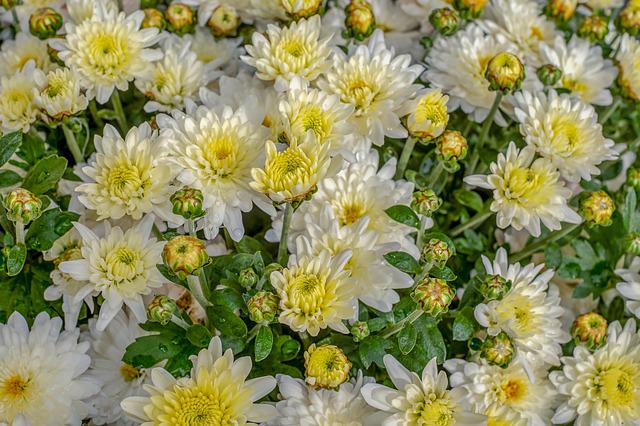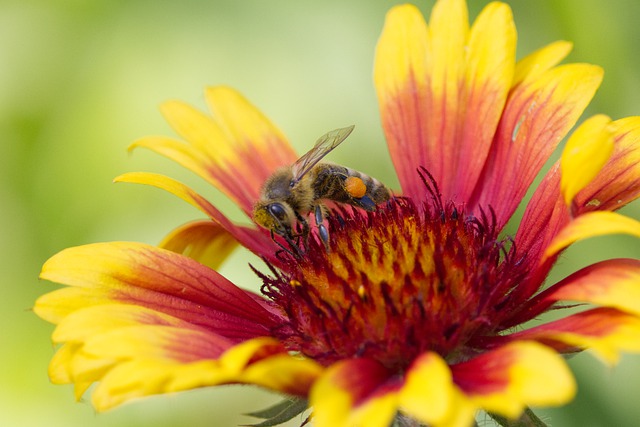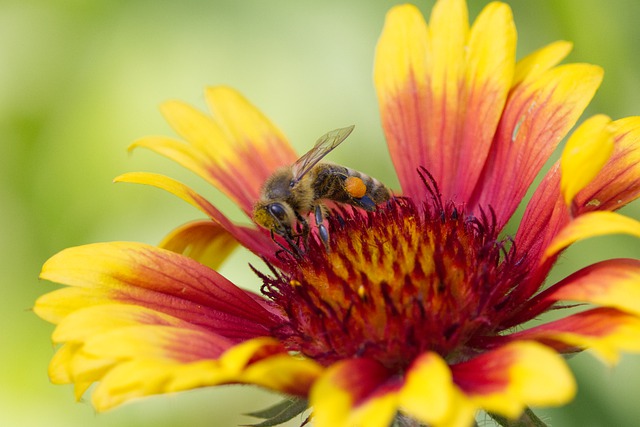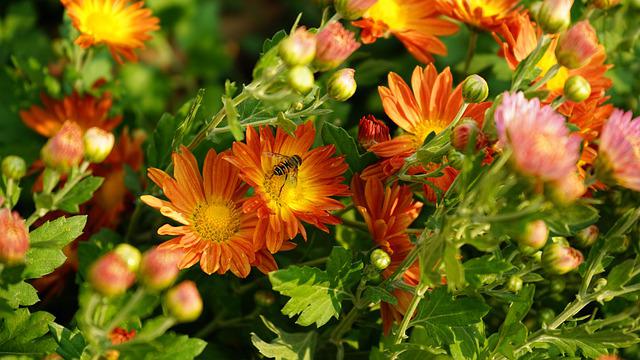Do Chrysanthemums Attract Bees? Know Pollinators that Chrysanthemums Attract

Mums are a possible source of nutrition for bees because they produce nectar and pollen. However, spiders, one of the bees’ natural predators, are also attracted to these flowers. Flying insects usually avoid mums because they could die if they eat them. Most bees won’t go near mums because staying away from them is natural. That might be surprising, especially considering how bright and beautiful mums can be.
That doesn’t mean you can’t put mums in your garden. Instead, plant them near other plants that bees like, like bee balm, foxglove, hostas, and lavender. In addition to their attraction to bees, chrysanthemums hold significant cultural and symbolic meanings. In many cultures, chrysanthemums are associated with honor, loyalty, and longevity.
Don’t forget to choose plants that will do well in your USDA hardiness zone and won’t steal nutrients from your mums. This will keep your garden healthy and keep problems from happening.
And if you want a plant that blooms around the same time as mums, you could try zinnias or California goldenrod. These plants attract many bees and do well in zones 6 through 10.
So, technically speaking, mums are “good” for bees, but they aren’t the best choice for these insects.
Table of Contents
Do Chrysanthemums Benefits Bees?

Chrysanthemum is a hit-or-miss nectar source for bees. Favorite autumn-blooming plants harbor potential enemies as well as nectar. If maintaining a pollination garden is important to you, combine perennial hardy garden mums (Chrysanthemum morifolium), which thrive in USDA hardiness zones 5 to 9, with more bee-friendly autumn blooms.
They are a good place for spiders to hide, even though they are technically a food source for bees. When bees delve too deeply into the plants that bloom in the fall, the spiders attack them. Due to this, bees frequently die after dipping into mums for nectar or naturally steer clear of them.
Chrysanthemums are not the best nectar source for bees, but the flowers may indirectly benefit them. According to a study in the journal “Bioscience Hypotheses,” bees are becoming increasingly dependent on the chemical pyrethrum, which is present in some Chrysanthemum species. Pyrethrums are poisonous to the mites that are thought to be destroying some bee populations. More mums could increase the bees’ resistance to mites, encouraging them to brave the flowers.
In addition, new research suggests that mums may provide courageous bees with a “weapon” to ward off their predators. The pyrethrum found in the flowers is toxic to spiders, which may protect the bees from being stung. Overall, while Chrysanthemums may indirectly benefit bees through their effects on mites or predators, the flowers are not an ideal food source.
Pollinators that Chrysanthemums Attract
Butterflies that aren’t frightened of spiders can safely linger in areas with mums because they provide a more reliable source of nectar than flowers. The monarch butterfly, however, is particularly fond of chrysanthemums. Hoverflies also appear to enjoy the nectar of mums.
- Monarch Butterfly- Butterfly larvae feed on various things, including milkweed, goldenrod, and chrysanthemums. Chrysanthemum nectar is important to their development as they transition from caterpillars into butterflies. Bees also visit these flowers, which helps the plant spread pollen. The Monarch butterfly breeds in North America and Central America during fall migration (in Mexico City, it can be seen all year long). In California, there has been an alarming decline in monarch populations due to deforestation and other threats. Still, vigilance and support from people who love nature remaining a part of their everyday lives could help. Chrysanthemums pose no threat to monarchs. They are a key source of food for many butterflies.
- Hoverflies- The flowers of chrysanthemums are popular nectar sources for hoverflies. The nectar provides food and shelter, while the floral architecture may lure the insects to a spot where collectors can capture them.

What Are Some Important Facts About Growing Mums?
Growing mums is not difficult at all in the USDA hardiness zones that are ideal. If you want to get the most out of them, you should be well-versed in their necessities and prerequisites.
If you choose to cultivate them in a container, you should plant them in a container with a lot of room for their roots to grow. In addition, make sure to use high-quality potting soil, which is best if it has good drainage.
Indeed, mums prefer to have a moist environment. In addition, if the substrate does not drain well, you risk overwatering your plants, which can severely damage your vegetation.
It would be best to put your mums in a location that gets at least a couple of hours of direct sunlight each day, so make sure you pick a sunny spot. Blooming could become problematic if there is insufficient lighting. Removing the spent flowers from the plant encourages new blooms and boosts their development.
Mulching the area around your plants with organic material such as leaves, wood chips, or straw is necessary if you live in a cooler climate. Your mums will be protected from potentially fatal thermal shocks if you use high-quality mulch because it will improve drainage, increase the amount of water retained, and maintain a consistent temperature in the soil.

Tips for Attracting Bees
- It is more likely that bees will visit a large collection of flowering plants than they will visit individual bushes.
- Put down the weed and insect killer you’ve sprayed on your grass!
- Bees are drawn to dandelion and clover flowers. Additionally, the leaves of the dandelion can be added to salads, and both the dandelion and clover flowers can be used to make tea. You can eat it, and so can the bees. It’s a win for both sides.
- Avoid growing plants that bees do not like.
- It would help if you planted some fruit trees in your yard.
- Your garden should contain a wide range of flowering vegetable varieties.
- To encourage bees to continue visiting your garden throughout the growing season, you should plant various vegetables that bloom at different times.
- Plant a wide variety of bee-friendly flowers and herbs. You should check with the agriculture department in your area to find out which plants are most popular with the bees native to your area. It is essential to have a variety of plants in your yard that bloom at different times of the year so that you can offer the bees different kinds of nectar from spring through fall.
